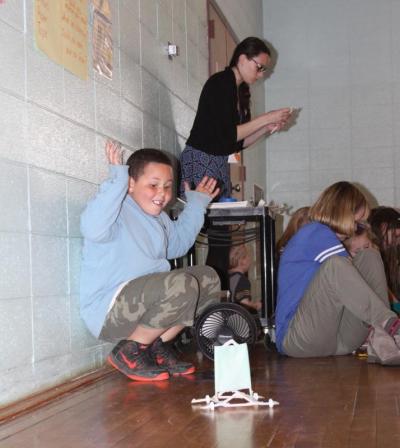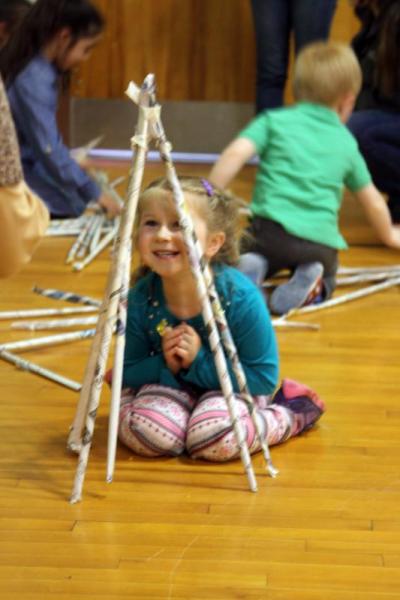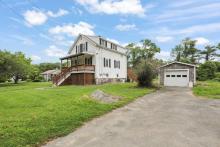Decas Elementary students put science to the test at STEAM Night
Fossils dating back 100 million years or more were on display in the bus lobby, catching the eyes of curious students.
In the gym, wind-powered cars raced as kids cheered. And inside one hallway, frogs eggs were under a microscope, just waiting for inspection.
Welcome to John W. Decas Elementary School’s second annual STEAM night.
More than 100 kids with parents in tow stopped by the school for the event, designed to foster interest in science, technology, engineering, arts and math, or STEAM.
Melissa Dionne, the school’s STEAM specialist, said last year’s event was a big success. Before Wednesday, she said anticipation was building among students.
“They had a great time last year,” she said. “They’ve been talking about it for weeks.”
On hand were scientists from Smithers Viscient, an environmental testing firm located across the street from the school, Wareham Land Trust members and computer code specialists, in addition to parent and teacher volunteers.
Paul Reibach, of Smithers Viscient, brought with him an extensive fossil collection, with specimens dating back millions of years. Another Smithers Viscient employee, Kristen Bentley, performed an experiment involving milk, dish detergent and colored dye that demonstrated how molecules react under different conditions. The result was an ever-changing color swirl inside a petri dish.
“We are teaching how molecules move and interact with each other,” said Bentley. “Even if you can’t necessarily see them, they’re there.”
But the main attraction were the hands-on activities in the gym where students learned basic scientific principles under the guise of fun and games.
Some of the activities were scaled up versions of ones students had worked on during class. Others, such as building and testing wind-powered cars, were new for the students. One activity had students tape cardboard tubes to the wall and dropping small, fuzzy pom poms for a lesson on gravity.
Overall, Dionne said the night allowed budding scientists to satisfy their curiosity together, without textbooks or lesson plans.


















